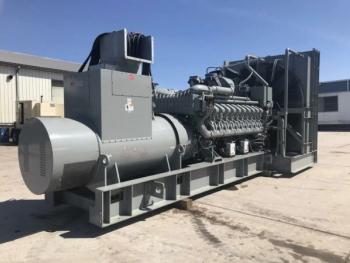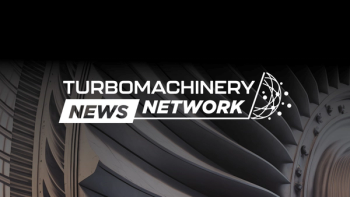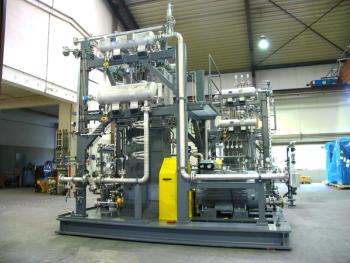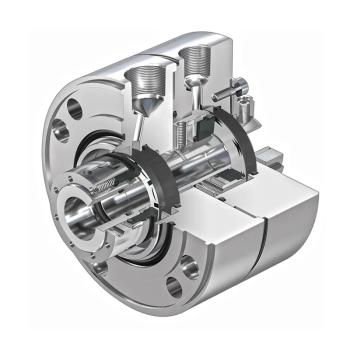
- Handbook 2026
- Volume 66
- Issue 6
Gas Turbine Industry 10-Year Outlook
Key Takeaways
- Aeroderivative gas turbines are increasingly popular for AI data centers due to their speed, flexibility, and reliability in providing on-site power.
- The demand for gas turbines is rising, driven by the need for efficient, lower-emission power sources as older coal plants retire.
Ever-increasing energy demands are placing a harsh spotlight on the supply chain and workforce challenges plaguing the turbomachinery industry.
The gas turbine industry is experiencing a revival since the COVID-19 pandemic that hurt many industries across various markets. With global gas turbine orders increasing year by year, can the supply side answer the call?
DEMAND SURGES FOR AERODERIVATIVES
The increase in turbine orders can be attributed to a few factors; however, significant orders for gas turbines from both GE Vernova and Baker Hughes, for example, destined for AI data centers, show where the market is heading.
Aeroderivative gas turbines are popular with AI data centers because of their speed, flexibility, and reliability in providing on-site power. As AI workloads demand massive amounts of electricity, traditional grid infrastructure often can’t keep up with the rapid growth of these facilities, leading to long delays for new grid connections. Aeroderivative turbines can be installed quickly, and their modular design allows for easy scalability as a data center’s power needs grow. Unlike traditional power plants, they can also start and stop rapidly, making them ideal for providing uninterrupted power and acting as a reliable backup to the grid or to intermittent renewable sources like wind and solar. This ability to provide fast, on-demand, and resilient power makes them an attractive solution for powering energy-intensive AI operations.
Aeroderivative turbines like GE Vernova’s LM2500 will likely be the most popular type for these data centers due to their fast-start capabilities and operational flexibility. Aeroderivatives from Siemens may also compete in this area, posing competition to GE Vernova and Baker Hughes.
Another factor is the general increasing demand for electricity, particularly in rapidly developing regions like the Asia-Pacific, where GE Vernova and Mitsubishi have traditionally garnered significant orders, and the ongoing retirement of older, less-efficient coal-fired power plants. Gas turbines, especially those in combined-cycle configurations, are highly valued for their efficiency and lower emissions compared with coal. They are also essential for providing grid stability and reliability, acting as a flexible backup to balance the intermittency of renewable energy sources like wind and solar power.
Turbines are also becoming a greener energy source as they increasingly use higher concentrations of hydrogen. The industry’s goal is to eventually operate on 100% green hydrogen, a move that will further reduce their environmental impact. While the necessary infrastructure for widespread hydrogen adoption, such as supply, pipelines, and storage, is not yet fully developed, these challenges are expected to be overcome in the future. Despite the challenges, the prospect of hydrogen use in turbines is a definite plus for those pushing for greener energy production.
Turbines aren’t going anywhere for the foreseeable future. The case for their use is strong, but can suppliers keep up with this demand?
WILL SUPPLY CHAIN CONSTRAINTS UNDERCUT SECTOR GROWTH?
While there is strong and growing demand for gas turbines for electrical generation, particularly as a flexible and reliable backup for renewable energy, the supply side might struggle to keep pace. The major manufacturers, including GE Vernova, Siemens Energy, and Mitsubishi Power, are experiencing a significant surge in orders, with some reporting backlogs that stretch to 2029 or beyond. This is creating a “turbine crunch” that is causing multi-year delays for new power plant projects and driving up costs. The supply chain for these complex machines is a major bottleneck, as they require specialized materials and skilled labor. Manufacturers are hesitant to invest heavily in expanding production capacity due to the boom-and-bust cycles that have historically characterized the industry and a fear that the current high demand may be temporary as other technologies like battery storage become more competitive.
The challenges are compounded by broader supply chain issues, including global shortages of critical materials, transportation bottlenecks, and a strained logistics network. The industry is also facing a looming workforce crisis, with a shortage of qualified workers and an aging labor pool. As demand for gas turbines converges across different sectors like power generation, oil and gas, and aerospace, all are competing for the same limited supply chain resources. This has led to a situation where project developers place orders years in advance to secure equipment. This supply-demand mismatch is not only causing project delays and cost overruns but also raises concerns about grid reliability, as utilities may not be able to bring new capacity online in a timely manner.
What this all translates to in Forecast International’s eyes is a general increase in production that is tempered due to the issues mentioned, which hurt all suppliers. Manufacturers such as GE Vernova are expanding facilities to increase gas turbine production, but changes in production output will not happen overnight. Orders are robust, and therefore the market is on solid footing; however, production, although increased, will take time to meet the demand.
Carter Palmer is Lead Analyst, Space Systems and Industrial & Marine Gas Turbines Education at Forecast International.
Articles in this issue
about 2 months ago
U.S. Power Industry Outlook 2026about 2 months ago
Turbomachinery International: 2026 HandbookNewsletter
Power your knowledge with the latest in turbine technology, engineering advances, and energy solutions—subscribe to Turbomachinery International today.





